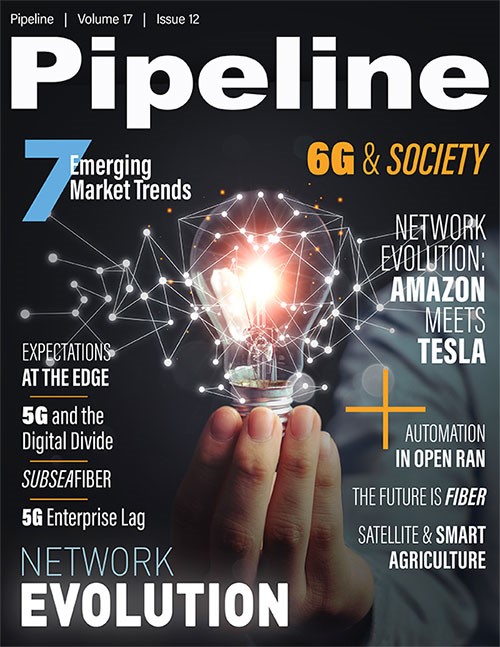Enterprise 5G: Missed Opportunities
By: Angus Ward

The COVID-19 crisis has been a great accelerator for key pre-pandemic trends. It’s made strong industries stronger, increasing their economic power, and left those that were already weak weaker.
For the telecoms industry, though, it’s a different story. During this period, telcos have donned the hero’s cape to keep us all connected remotely, meeting the demand for more network capacity as it grew exponentially to support widespread transformation. But the industry has not seen its economic power increased. It’s clear that now is the time for CSPs to evolve from selling standard connectivity products to selling prepackaged solutions that solve genuine business problems.
A missed opportunity?
When it comes to 5G, it’s clear that the opportunity lies in the enterprise and B2B space. Nurturing a factory of collaboration where compelling 5G solutions are co-created that enable use cases across industries including manufacturing, automotive, agriculture, utilities, smart cities, healthcare, and transport will be key.
The challenge is that CSPs are still very oriented toward the consumer market, with only 31 percent focusing on channeling investment into the enterprise. And when it does come to focusing on the enterprise, our recent research revealed that the majority of CSPs focus 70 percent of their B2B resources on less than one percent of the enterprise universe made up by large businesses. In essence, they are overlooking a vast opportunity to grow 5G B2B revenues, by focusing so little of their time on SMEs, which account for 99 percent of the world’s businesses—and represent a $433 billion revenue opportunity.
Another harsh reality is that many large and multinational enterprises do not view CSPs as their preferred partner for 5G strategy execution. According to new research recently launched by Beyond by BearingPoint in collaboration with Omdia, although enterprise 5G projects more than doubled in the last year, the share of those projects led by CSPs declined by five percent, from 21 percent in 2020 to 16 percent today. With 72.3 percent of CSPs believing that B2B/B2B2X opportunities will derive the most 5G revenues, they must start picking up the pace and putting dedicated resources in place faster if they are to seize opportunities as they emerge.
Less talking, more co-creation
CSPs are well-aware of the urgency to capitalize on 5G revenues in an effort to claw back their $1 trillion investment in the network. Awareness, however, doesn’t always translate to action. The telecoms industry has spent the last several years generating hype for 5G, but when it comes to marrying promise with reality, telecoms have been slow to adapt to market requirements. A year ago, it looked like the enterprise opportunity might slip through the fingers of CSPs that were trapped in that dated mindset of “if you build it, they will come.” While there has largely been a shift in that view, the enterprise opportunity remains untapped.
5G cannot be a standalone technology. Instead, 5G offerings must be part of a wider solution designed to solve enterprise business and operational problems, encompassing a multi-technology, omni-partner, vertical-oriented approach. Through increased speeds and significant latency reductions, 5G will complement a breadth of technologies such as IoT, AR/VR, mobile edge compute, analytics and AI. CSPs are not expected to be specialists in all these areas; rather, they are encouraged to collaborate, adopting principles of openness, within an ecosystem of multiple partners and multiple technologies, multiple vertical experts, and the enterprises themselves.
The ambition for CSPs should be to facilitate the creation or co-creation of enterprise 5G solutions, regardless of the origin of each individual application. They must act instead as masters of orchestration, bringing technologies together to deliver unique solutions that are easy to understand and simple to implement.
CSPs then must harness this factory of co-creation and make it scalable, repeatable, and ensure it generates a true growth engine. The enterprise customer won’t understand or have time to learn about the technology, and the onus lies on the CSP to orchestrate the complexity and connect the technologies that form the successful outcomes that the enterprise requires. Stop hesitating and continue to be more collaborative even when you may not be in full control of the product or solution. Learn how to work with partners when it comes to developing commercial models between different organizations. Ensure you have a plan in place to navigate customer ownership and how the customer will be directly impacted.
Emerging models reveal a complex reality
For CSPs, the enterprise 5G landscape is not without its share of challenges. Moreover, the depth of the 5G opportunity has attracted competition from players that often have a much deeper vertical understanding. Despite enterprise 5G projects



















